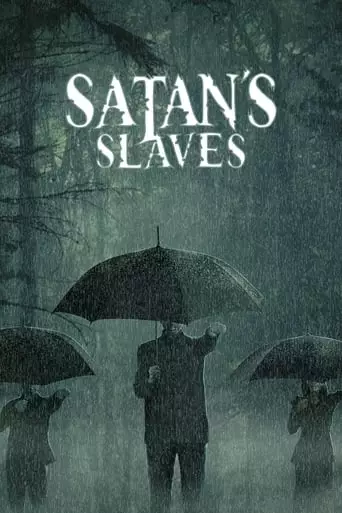After dying from a strange illness that she suffered for three years, a mother returns home to pick up her children.
Satan’s Slaves is a 2017 Indonesian horror film directed by Joko Anwar, serving as a remake of the 1980 film of the same name. Set in 1981, the story follows the Suwono family, who reside in a rural area. The family comprises Mawarni, a former singer now bedridden with a mysterious illness; her husband, Bahri; their four children—Rini, Toni, Bondi, and Ian; and Mawarni’s mother, Rahma. The family faces financial difficulties, and Mawarni’s condition deteriorates, leading to her death.
After Mawarni’s passing, the family experiences supernatural occurrences, including apparitions of Mawarni’s ghost. They discover that Mawarni had made a pact with a satanic cult to bear children, with the sinister condition that the youngest child would be claimed by the cult upon turning seven. As Ian approaches his seventh birthday, the family confronts the terrifying reality of the cult’s intentions. The narrative delves into themes of familial bonds, the consequences of forbidden pacts, and the clash between traditional beliefs and modernity.
Main Themes
- The Consequences of Forbidden Pacts: The film explores the repercussions of Mawarni’s pact with a satanic cult, highlighting the dangers of seeking forbidden solutions to personal desires. This theme underscores the moral and ethical dilemmas associated with making deals that defy natural laws.
- Familial Bonds and Sacrifice: At its core, Satan’s Slaves examines the strength of family relationships and the lengths to which individuals will go to protect their loved ones. The narrative portrays the family’s unity in the face of supernatural threats and the sacrifices they make to safeguard each other.
- Supernatural Horror and Cultural Beliefs: The film integrates elements of Indonesian folklore and supernatural horror, reflecting cultural beliefs and fears. It portrays traditional concepts of spirits and the afterlife, offering a glimpse into Indonesian cultural narratives and their influence on horror storytelling.
- Isolation and Vulnerability: Set in a remote countryside location, the film emphasizes themes of isolation and vulnerability. The family’s seclusion amplifies their helplessness against the malevolent forces, highlighting the horror of being cut off from external help and support.
Impact of the Movie
Satan’s Slaves received critical acclaim for its atmospheric tension, compelling storytelling, and strong performances. It became one of the highest-grossing films in Indonesia upon its release, reflecting its widespread popularity. The film’s success has been attributed to its ability to blend traditional horror elements with cultural specificity, resonating with both local and international audiences.
7 Reasons to Watch Satan’s Slaves (2017)
- Authentic Cultural Representation: The film offers an authentic portrayal of Indonesian culture and folklore, providing viewers with a unique perspective on traditional beliefs and practices. This cultural depth enriches the horror experience, making it distinct from Western horror narratives.
- Atmospheric Cinematography: The cinematography effectively captures the eerie ambiance of the rural setting, using lighting and camera work to enhance the film’s suspense and horror elements. The visual style immerses viewers in the unsettling environment, contributing to the film’s overall impact.
- Strong Performances: The cast delivers compelling performances, particularly Tara Basro as Rini, whose portrayal of a protective sister adds emotional depth to the narrative. The actors’ commitment to their roles enhances the film’s authenticity and emotional resonance.
- Engaging Storyline: The plot is well-structured, with a gradual build-up of tension that keeps viewers engaged. The narrative effectively intertwines family drama with supernatural horror, creating a compelling story that maintains interest throughout.
- Effective Use of Horror Elements: The film skillfully employs traditional horror tropes, such as haunted locations and malevolent spirits, while adding a unique cultural twist. This blend of familiar and novel elements keeps the horror fresh and engaging.
- Critical Acclaim: Satan’s Slaves has been praised by critics for its direction, storytelling, and cultural authenticity. Its success has brought international attention to Indonesian cinema, highlighting the country’s growing influence in the global film industry.
- Cultural Insight: For viewers interested in exploring different cultural narratives, the film provides valuable insight into Indonesian beliefs and practices, particularly concerning the supernatural. This cultural exploration adds depth to the horror genre, offering a fresh perspective for audiences.
How Will You Feel After Watching Satan’s Slaves (2017)?
After watching Satan’s Slaves, viewers are likely to feel a lingering sense of unease and reflection. The film’s atmospheric tension and cultural depth leave a lasting impression, prompting contemplation of its themes and the portrayal of familial bonds and supernatural beliefs. The emotional and psychological impact of the film may lead to a heightened awareness of the cultural nuances presented, offering a profound viewing experience.

